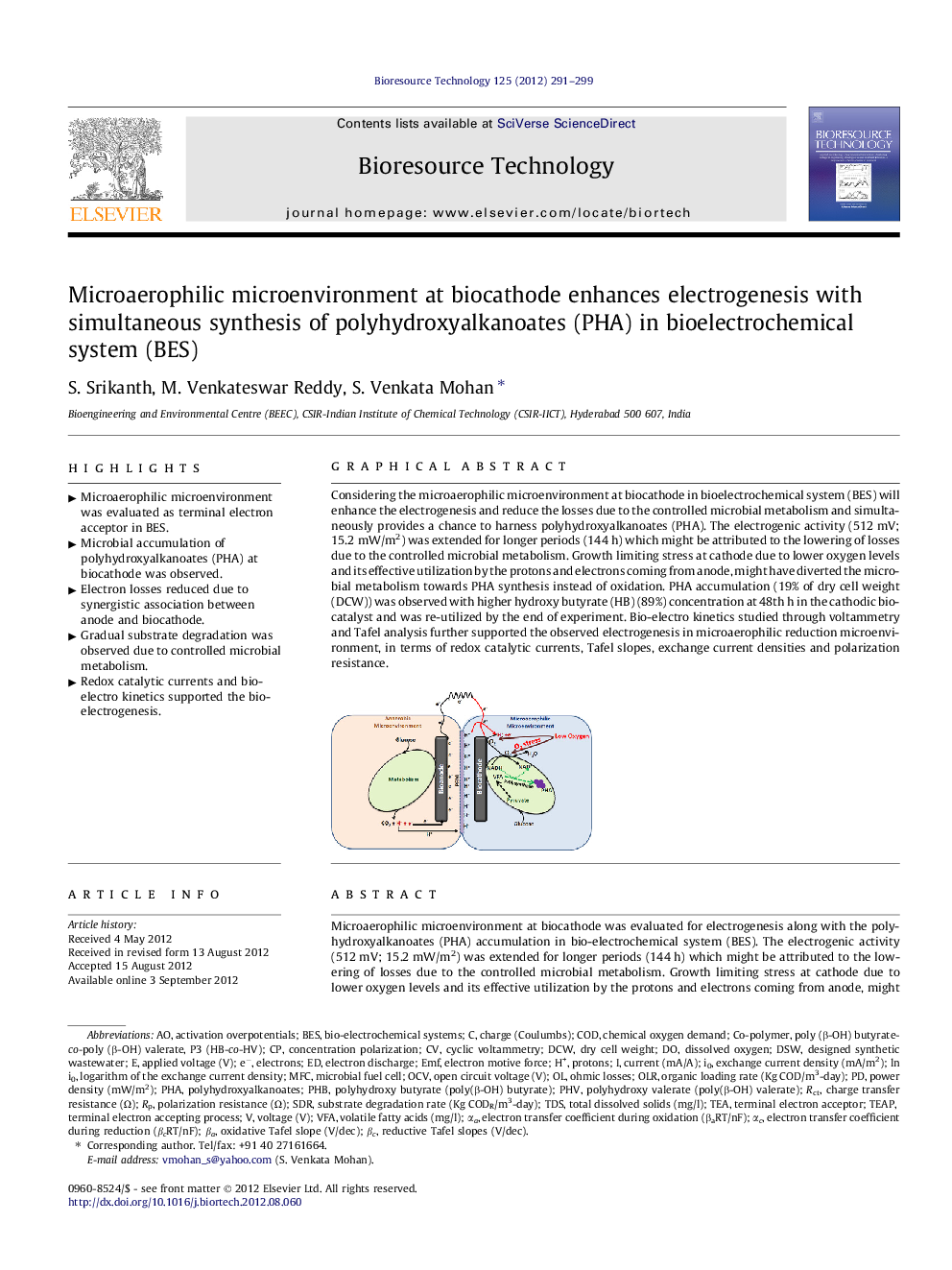| کد مقاله | کد نشریه | سال انتشار | مقاله انگلیسی | نسخه تمام متن |
|---|---|---|---|---|
| 681330 | 1460018 | 2012 | 9 صفحه PDF | دانلود رایگان |

Microaerophilic microenvironment at biocathode was evaluated for electrogenesis along with the polyhydroxyalkanoates (PHA) accumulation in bio-electrochemical system (BES). The electrogenic activity (512 mV; 15.2 mW/m2) was extended for longer periods (144 h) which might be attributed to the lowering of losses due to the controlled microbial metabolism. Growth limiting stress at cathode due to lower oxygen levels and its effective utilization by the protons and electrons coming from anode, might have diverted the microbial metabolism towards PHA synthesis instead of oxidation. PHA accumulation (19% of dry cell weight (DCW)) was observed with higher hydroxy butyrate (HB) (89%) concentration at 48th h in the cathodic biocatalyst and was re-utilized by the end of experiment. Bio-electro kinetics studied through voltammetry and Tafel analysis further supported the observed electrogenesis in microaerophilic reduction microenvironment, in terms of redox catalytic currents, Tafel slopes, exchange current densities and polarization resistance.
Considering the microaerophilic microenvironment at biocathode in bioelectrochemical system (BES) will enhance the electrogenesis and reduce the losses due to the controlled microbial metabolism and simultaneously provides a chance to harness polyhydroxyalkanoates (PHA). The electrogenic activity (512 mV; 15.2 mW/m2) was extended for longer periods (144 h) which might be attributed to the lowering of losses due to the controlled microbial metabolism. Growth limiting stress at cathode due to lower oxygen levels and its effective utilization by the protons and electrons coming from anode, might have diverted the microbial metabolism towards PHA synthesis instead of oxidation. PHA accumulation (19% of dry cell weight (DCW)) was observed with higher hydroxy butyrate (HB) (89%) concentration at 48th h in the cathodic biocatalyst and was re-utilized by the end of experiment. Bio-electro kinetics studied through voltammetry and Tafel analysis further supported the observed electrogenesis in microaerophilic reduction microenvironment, in terms of redox catalytic currents, Tafel slopes, exchange current densities and polarization resistance.Figure optionsDownload as PowerPoint slideHighlights
► Microaerophilic microenvironment was evaluated as terminal electron acceptor in BES.
► Microbial accumulation of polyhydroxyalkanoates (PHA) at biocathode was observed.
► Electron losses reduced due to synergistic association between anode and biocathode.
► Gradual substrate degradation was observed due to controlled microbial metabolism.
► Redox catalytic currents and bio-electro kinetics supported the bio-electrogenesis.
Journal: Bioresource Technology - Volume 125, December 2012, Pages 291–299